| |
- 'Invisible cities' by Italo Calvino, first published in 1972 by Giulio Einaudi Editore [translated from the Italian by William Weaver, published 1974 by Harcourt Brace Jovanovich] http://www.scribd.com/ [Notes …]
» 'From now on, I'll describe the cities to you,' the Khan had said, 'in your journeys you will see if they exist.'
But the cities visited by Marco Polo were always different from those thought of by the emperor.
[ 1]
'And yet I have constructed in my mind a model city from which all possible cities can be deduced,' Kublai said. 'It contains everything corresponding to the norm. Since the cities that exist diverge in varying degree from the norm, I need only foresee the exceptions to the norm and calculate the most probable combinations.'
[ 2] 'I have also thought of a model city from which I deduce all the others' Marco answered, 'It is a city made only of exceptions, exclusions, incongruities, contradictions. If such a city is the most improbable, by reducing the number of elements, we increase the probability that the city really exists. So I have only to subtract exceptions from my model, and in whatever direction I proceed, I will arrive at one of the cities which, always as an exception, exist. But I cannot force my operation beyond a certain limit: I would achieve cities too probable to be real.' « [chapter 4, 'CITIES & NAMES 1', page 54 online version see page 18]
3 » [...] And Polo said: 'Every time I describe a city I am saying something about Venice.' 'When I ask you about other cities, I want to hear about them. And about Venice, when I ask you about Venice.' 'To distinguish the other cities' qualities, I must speak of a first city that remains implicit. For me it is Venice.' […] « [chapter 6, page 68, online version see page 22]
» [...] Kublai asked Marco: 'You, who go about exploring and who see signs, can tell me towards which of these futures the favouring winds are driving us.'
'For these ports I could not draw a route on the map or set a date for the landing. At times all I need is a brief glimpse, an opening in the midst of an incongruous landscape, a glint of lights in the fog, the dialogue of two passersby meeting in the crowd, [4] and I think that, setting out from there, I will put together, piece by piece, the perfect city, made of fragments mixed with the rest, of instants separated by intervals, of signals one sends out, not knowing who receives them. If I tell you that the city towards which my journey tends is discontinuous in space and time, now scattered, now more condensed, you must not believe the search for it can stop. Perhaps while we speak, it is rising, scattered, within the confines of your empire; you can hunt for it, but only in the way I have said.' […] « [chapter 9, 'HIDDEN CITIES 5', page 122, online version see page 43]
- Images taken by me from February to March 1999
Img. _01 Venice Beach, Los Angeles, California, USA
Img. _02 Venice Beach, L. A.
Img. _03 'Marlboro Man' in West Hollywood, Los Angeles
Img. _04 Las Vegas, Nevada, USA
Img. _05 Billboard in West Holywood, L. A.
Img. _07 Muscle Beach, Venice, L. A.
Img. _08 Los Angeles
Img. _11 Muscle Beach, Venice, L. A.
Img. _13 Central Valley near Fresno, California, USA
- ^ 'The Society of the Spectacle [La Société du Spectacle]' by Guy-Ernest Debord first published 1967 by Editions Buchet-Chastel Paris [the first English translation was published by Black & Red in 1970] http://library.nothingness.org/ [1983 edition]
5 » Chapter 1 "Separation Perfected"
1
In societies where modern conditions of production prevail, all of life presents itself as an immense accumulation of spectacles. Everything that was directly lived has moved away into a representation.
2
The images detached from every aspect of life fuse in a common stream in which the unity of this life can no longer be reestablished. Reality considered partially unfolds, in its own general unity, as a pseudo-world apart, an object of mere contemplation. The specialization of images of the world is completed in the world of the autonomous image, where the liar has lied to himself. The spectacle in general, as the concrete inversion of life, is the autonomous movement of the non-living. «
[online]
6 » Chapter 9 "Ideology Materialized"
[…] 218
"In clinical charts of schizophrenia," says Gabel, "the decay of the dialectic of totality (with dissociation as its extreme form) and the decay of the dialectic of becoming (with catatonia as its extreme form) seem solidly united." The spectator's consciousness, imprisoned in a flattened universe, bound by the screen of the spectacle behind which his life has been deported, knows only the fictional speakers who unilaterally surround him with their commodities and the politics of their commodities. [7] The spectacle, in its entirety, is his "mirror image." Here the stage is set with the false exit of generalized autism. «
[online]
- 'Simulacra and Simulations [Simulacres et Simulation]'
by Jean Baudrillard, published first 1981 by Éditions Galilée in French, English translation published by The University of Michigan Press 1994, translated by Sheila Faria Glaser http://books.google.at/
» The Implosion of Meaning in the Media
[8] We live in a world where there is more and more information, and less and less meaning. Consider three hypotheses. […] « [page 79]
http://www.egs.edu/
more Baudrillard: http://www.egs.edu/
and: 'Architektur: Wahrheit oder Radikalität?' http://www.egs.edu/
- 'Understanding Media: The Extensions of Man' by Marshall McLuhan [published first by McGraw-Hill New York 1964] http://books.google.at/
9 » The medium is the message « [page 7]
10 » This fact, characteristic of all media, means that the "content" of any medium is always another medium. « [page 8]
22 [confer page 45 in the German edition, published by Verlag der Kunst Dresden, 1994]
- IN:
'Desiring Practices' edited by Katrina Ruedi, Sarah Wigglesworth and Duncan McCorquodale, published by Black Dog Publishing London 1996. Publication of the 'Desiring Practices' conference in London, October 1995.
11 'Architectural Models' or 'Tan Hawaiian with Tanya' by Neil Leach 1996 [page 187 - 205]
http://neilleach.wordpress.com/ 2 [http://books.google.at/]
- 'Learning from Las Vegas: The Forgotten Symbolism of Architectural Form' by Robert Venturi, Denise Scott Brown, Steven Izenour, published first by MIT Press in 1972 [revised edition 1977] http://books.google.at/
12 » Signs in Las Vegas use mixed media - words, pictures, and sculpture - to persuade and inform. A sign is, contradictorily, for day and night. The same sign works as polychrome sculpture in the sun and as black silhouette against the sun; at night it is a source of light. It revolves by day and becomes a play of lights at night. « [page 52]
13 » Las Vegas daylight, like Greek daylight, makes the polychrome temples stand out proud and clear in the desert. This is a quality hard to catch on film. No photographs of the Acropolis do it justice. And Las Vegas is better known for its night light than its daylight. « [page 79]
An equation still stiking!
14 » The Architecture of Persuasion « [page 9]
15 » Las Vegas is analyzed here only as a phenomenon of architectural communication. […] Las Vegas's [!] values are not questioned here. The morality of commercial advertising, gambling interests, and the competitive instinct is not at issue here, although, indeed, we believe it should be in the architect's broader, synthetic tasks of which an analysis such as this is but one aspect. The analysis of a drive-in church in this context would match that of a drive-in restaurant, because this is a study of method, not content. « [page 3 - 6]
16 a » Historical Symbolism and Modern Architecture
[…] These architect's preoccupation with space as the architectural quality caused them to read the buildings as forms, the piazzas as space, and the graphics and sculpture as color, texture, and scale. […]
The symbol systems developed by the commercial artists of Madison Avenue, which constitute the symbolic ambience of urban sprawl, they did not acknowledge. « [page 104]
- 'Complexity and Contradiction in Architecture' by Robert Venturi, published by Museum of Modern Art, New York, 2002 [published first 1966] http://books.google.at/
17
» In God's Own Junkyard Peter Blake has compared the chaos of commercial Main Street with the orderliness of the University of Virginia […]
. Besides the irrelevancy of the comparison, is not Main Street almost all right? Indeed, is not the commercial strip of a Route 66 almost all right? As I have said, our question is: what slight twist of context will make them all right? « [page 102]
19 » Present-day architects in their visionary compulsion to invent new techniques, have neglected their obligation to be experts in existing conventions. The Architect, of course, is responsible for the how as well as the what on his building, but his innovating role is primarily in the what; his experimentation is limited more to his organization of the whole than to technique in the parts. The architect selects as much as creates. « [page 43]
20 » The architect who would accept his role as combiner of significant old clichés – valid banalities – in new contexts as his condition within a society that directs its best efforts, its big money, and its elegant technologies elsewhere, can ironically express in this indirect way a true concern for society’s inverted scale of values. « [page 44]
21 » Containment and intricacy have been characteristic of the city as well. Fortified walls for military protection and the greenbelt for civic protection are examples of this phenomenon. Contained intricacy might be one of the viable methods for dealing with urban chaos and the endlessness of roadtown; through the creative use of zoning and positive architectural features it is possible to concentrate the intricacies of roadtowns and junkyards, actual and figurative. « [page 72]
- 'City of Quartz: excavating the future in Los Angeles' by Mike Davis, published by Verso, 1990 http://books.google.at/
18 'Fontana: Junkyard of Dreams' [pages 376, 381 onwards]
» In its original, early-twentieth-century incarnation, Fontana was the modernized Jeffersonian idyll: an arcadian community of small chicken ranchers and citrus growers living self-sufficiently in their electrified bungalows. Then in 945 the Community was abruptly reshaped to accommodate the dream of a Rooseveltian industrial revolution in the West. […]
Fontana Farms was the brainchild of A.B. Miller, San Bernardino contractor and agriculturalist. […] a brilliant real-estate promoter who fully grasped the combination of advertising and infrastructure […]
By 1913 his [Miller's] Fontana Company was ready to begin laying out a townside between Foothill Boulevard (an old wagon road soon to become part of famous US 66) and the Santa Fe tracks. […]
Other famous irrigation colonies of the day - Pasadena, Ontario, Redlands, and so on - thrived by franchising citrus growing as an investment haven for wealthy, sun-seeking Easterners. The cooperative, "Sunkist" model (later so influential in shaping Herbert Hoover’s vision of self-organized capitalism) provided newcomers with a network of production services, a coordinated labor pool, and a national marketing organization with a common trademark.
[…]
Miller' dream sold well, even through the early years of the Depression. By 1930 the Fontana Company had subdivided more than three thousand homesteads, half occupied by full-time settlers, some of them immigrants from Hungary, Yugoslavia, and Italy. […]
Even if Fontana Farms was ultimately little more than a real-estate promotion cleverly, and extravagantly, packaged as semi-utopia, it retains considerable historical importance as the most striking Southern California example of the "back to the land" movement in the inter-war years. Originally a yeoman's version of the irrigation colony ideal (exemplified by both Chaffey's Ontario and the Socialists' Llano del Rio), Fontana grew to share many of the qualities of Frank Lloyd Wright's "Broadacre City" project and the 1930s anti-urban experiments. «
[for an online extract see: http://books.google.at/ pages 435 - 440]
- Img. _06 Advertising from the Sunkist website 'Crate Labels Gallery'
http://www.sunkist.com/
http://www.inlandempireimages.com/ […]
- IN:
'Das Abenteuer der Ideen, Architektur und Philosophie seit der industriellen Revolution' catalogue for 'Internationale Bauaustellung Berlin', published by Frölich & Kaufmann, Berlin 1984
'Labyrinth und Archi/Textur', Eva Meyer talking to Jacques Derrida [pages 95 -105] translated by me
23 [page 96]
24 [confer page 99]
25 [page 100]
- 'The Making of Urban America: A History of City Planning in the United States' by John W. Reps published by Princeton University Press, 1965 http://books.google.at/
Img. _09 Label: » Figure 279. Plan of Far West, Missouri: ca. 1836 « [page 469]
» […] Acting under these instructions the church leaders in Missouri planned the city Far West on a tract originally one square mile. Figure 279 shows the plan of the city and indicates that Smith's exact specifications had not been followed completely. While the 8 main streets leading to the central square were 132 feet wide, the others had been reduced to 82 1/2 feet. The heavier lines enclosing the blocks in the center of the drawing evidently indicate the first blocks laid out, for this is exactly one mile square. But as more and more of the Saints made the long journey from Kirtland and as new church members were recruited from elsewhere, it apparently became necessary to expand the town. « [page 468]
http://www.library.cornell.edu/
- 'Ubiquitous urbanism - Total Architecture : The Tokyo Experiment : A Studio in Global Master Planning with Zaha M. Hadid at Columbia University Graduate School of Architecture, Planning and Preservation.' [Columbia Books of Architecture, Studio Works 2] published by Trustees of Columbia University in the City of New York 1994
Img. _10 inside cover http://newsfeed.kosmograd.com/ […]
- Img. _12 Netpic 'Jerry Springer' http://www.cmt.com/
- 'Theory of Society' (Volume 1) by Niklas Luhmann, translated by Rhodes Barrett, published by Stanford University Press in 2012
[published first in German as 'Die Gesellschaft der Gesellschaft' (The Society of Society) by Suhrkamp, Frankfurt am Main, 1997, my paperback edition is from 1998]
Volume 1 http://www.sup.org/ [German]
Volume 2 http://books.google.at/
26 The concept of self-referential operative closure …
[Das Konzept der selbstreferenziellen, operativen Geschlossenheit verändert den Begriff der Systemgrenze : Formen : sind nicht als Gestalten zu sehen, sondern als Grenzlinie, als Markierung einer Differenz, die dazu zwingt, klarzustellen, welche Seite man bezeichnet : die andere Seite (der "Form") ist gleichzeitig mitgegeben.]
{Patrik Schumacher has announced HIS 'Autopoiesis of Architecture' as "a comprehensive theory of architecture" for 2010 and I am very curious …}
-
'Flaneure, Spieler und Touristen: Essays zu postmodernen Lebensformen' by Zygmunt Bauman published by Hamburger Edition, 1997 http://books.google.at/
27 [confer page 22]
- 'Living Room Wars: Rethinking Media Audiences for a Postmodern World' by Ien Ang, published by Routledge, 1996 http://books.google.at/
28 '4 Ethnography and radical contextualism in audience studies' [page 66 - 81]
» Our curiosity about the audience is never innocent. Specific interests and orientations, material and intellectual, generally shape the perspective from which we come to define our object of study, and the kinds of knowledge - their form and content, their scope and substance - we pursue. There is now clearly a sense of crisis in the study of media audiences: the ambiguous title of a recent conference dedicated to this subject, 'towards a comprehensive theory of the audience?', suggests an awareness of a confusing lack of such 'comprehensiveness'. « [page 66]
» It seems to me that the crisis in audience studies should be understood in the context of this postmodern momentum of change.
It is often said, and often not without a sense of modernist nostalgia, that the television audience is becoming increasingly fragmented, individualized, dispersed, no longer addressable as a mass or as a single market, no longer comprehensible as a social entity, collectively engaged and involved in a well-defined act of viewing. Indeed, television's proliferation has made it painfully clear that it does not make sense to speak about the 'television audience' as a neatly demarcated object of study. In my view, we should take this historical realization as an opportunity to finally mark out the productive end of the search for a 'comprehensive theory of the audience', which has often been the implicit motif of the diverse paradigms of audience research within communication studies. « [page 67]
29 [confer page 66 - 81]
- IN:
'Die Kunst des Öffentlichen.: Projekte, Ideen, Stadtplanungsprozesse im politischen, sozialen öffentlichen Raum.' by Marius Babias, Achim Könneke, published by Verlag der Kunst, 1998 http://books.google.at/
30 'Public Art und "messianische Zeit" [Concerning Public Art and Messianic Time]' by Stiles Kristine 1998
» Nur wo eine [solche] gemeinsame Wahrheit seitens der KünstlerInnen und der Öffentlichkeit gegeben ist, kann Public Art in einer Community wirklich funktionieren. In einer solchen Situation schuf Suzanne Lacy im Herbst 1977 'In Mourning and in Rage'. [Die Arbeit wurde damals nicht als ‘Public Art‘ bezeichnet, sondern galt als Performance Art oder ästhetischer Aktivismus.] Da sie aber bei den EinwohnernInnen von Los Angeles eine Diskussion über die sozialen Auswirkungen von Vergewaltigung und Mord in Gang setzte, die in Zeitungen, Fernsehen und Radio ausgetragen wurde, ist 'In Mourning and in Rage' rückblickend als eines der gelungensten Beispiele von Public Art zu betrachten. Lacy inszenierte dieses öffentliche Ereignis als der sogenannte "Hillside Strangler" in Los Angeles Frauen ermordete und vergewaltigte und so die Stadt in Angst und Schrecken versetzte. In Lacys zeitlich begrenztem Projekt ging es darum, Bewußtsein zu schaffen. Es verwandelte die weit ausgedehnte und heterogene Stadt Los Angeles in eine Gemeinschaft die sah, hörte und teilnahm und sich Gedanken machte über die Auswirkungen von Vergewaltigungen und deren Darstellung in den Medien auf die Frauen, die in dieser Stadt lebten und befürchteten, dasselbe Schicksal zu erleiden. « [page 63 http://youtu.be/]
- 31 Drastically illustrated by the annual ranking of the 'Most Secure U.S. Places to Live' and its socio-economic impacts.
[In 1999 I was referring to alleged manipulations of such rankings in order to 'channel' investments and migration of wealth. The Net seems to have no record of such anxieties, and unfortunately I have no hard copy of these reports …]
- 32 "Structures" and their premised properties have replaced "chaos" and "order" as urban representations.
|







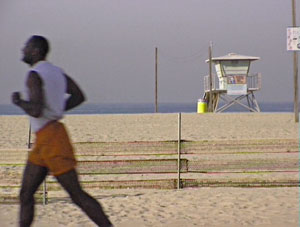
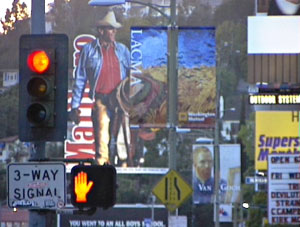
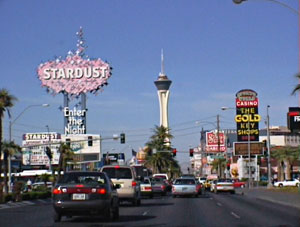
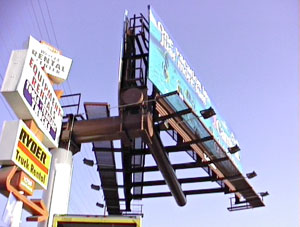

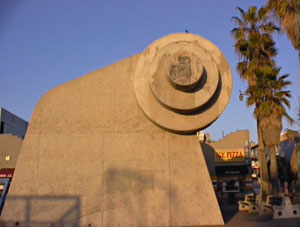
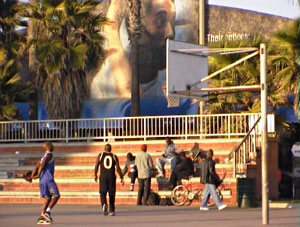
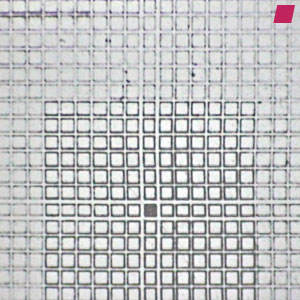
!['Master Plan' from 'Ubiquitous urbanism - Total Architecture : The Tokyo Experiment : A Studio in Global Master Planning with Zaha M. Hadid at Columbia University Graduate School of Architecture, Planning and Preservation.' [Columbia Books of Architecture, Studio Works 2] published by Trustees of Columbia University in the City of New York 1994 'Master Plan' from 'Ubiquitous urbanism - Total Architecture : The Tokyo Experiment : A Studio in Global Master Planning with Zaha M. Hadid at Columbia University Graduate School of Architecture, Planning and Preservation.' [Columbia Books of Architecture, Studio Works 2] published by Trustees of Columbia University in the City of New York 1994](content/ubiquitous_urbanism_hadid_1994.jpg)
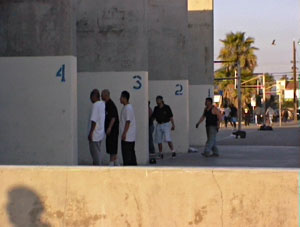
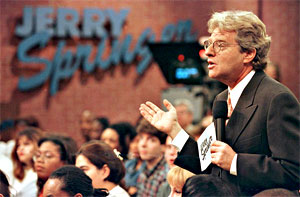
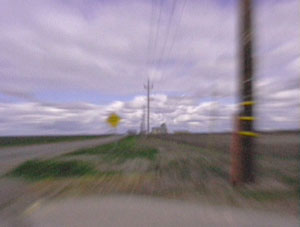
TOP
Social Networks